In the 21st century, we’ve come to recognize the importance of monitoring our health. However, we often overlook the subtle signals our bodies send us. For instance, have you ever taken a moment to examine your stool? While it might sound unpleasant, its color and texture can provide valuable insights into your well-being.
Bright Side has gathered useful information to help you take another step toward better health. Keep reading to the end to stay informed and empowered!
Poop color
As you likely know, the typical color of stool is brown. While it can vary slightly based on your diet, a sudden and unexplained change in color could be a warning sign. Let’s explore what these changes might mean and how to interpret them.
1. White

Whitish, grayish, or clay-colored stool often signals a lack of bile, which can point to issues with the liver or gallbladder—organs responsible for producing and storing bile. This discoloration could indicate a range of conditions, from blocked bile ducts and gallstones to more serious problems like cirrhosis.
White mucus on brown stool may be a sign of Crohn’s disease.
2. Green

A green stool can result from eating chlorophyll-rich vegetables, such as spinach, consuming green food coloring in drinks, or taking iron supplements. However, if your diet isn’t the cause, the green color may indicate that your stool moved through the digestive tract too quickly, preventing it from absorbing enough bile and bilirubin.
3. Yellow

Yellow stool can sometimes indicate blocked bile ducts or difficulty absorbing fats. It may also point to a lack of enzymes produced by the pancreas, which could be linked to conditions like chronic pancreatitis, celiac disease, or cystic fibrosis. However, don’t worry just yet—yellow poop can also simply result from eating too many carrots or consuming a lot of yellow-colored drinks.
4. Black

Black stool can occur due to certain medications, such as aspirin, ibuprofen, or iron supplements, or it may signal bleeding in the intestines. If bleeding is suspected, it’s crucial to consult a doctor right away. However, a more common and less concerning cause is the food you eat—black or blue foods, like blueberries or licorice, can also give your stool this dark hue.
5. Red
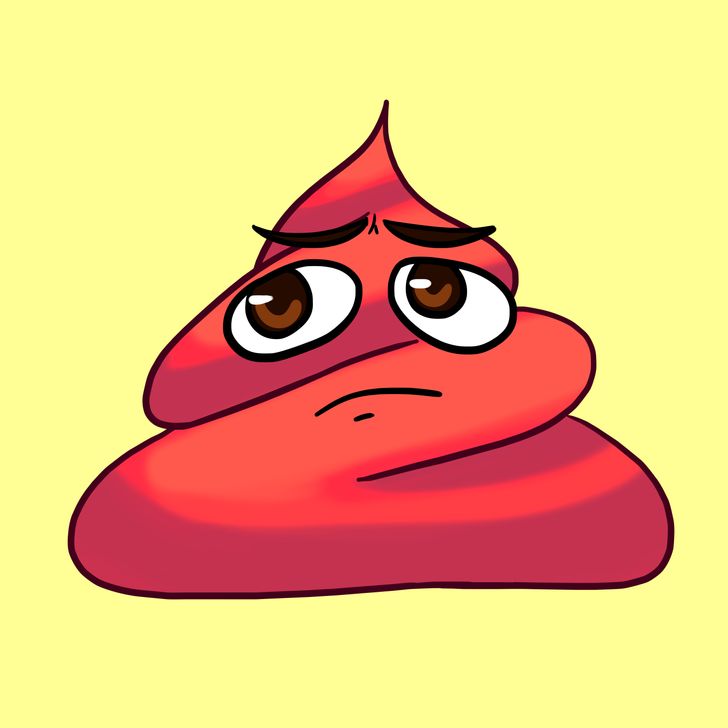
Red stool is often linked to your diet. Foods like beets, tomatoes, or brightly colored drinks can easily cause this change—so consider what you’ve eaten recently. However, if your diet isn’t the reason, it’s important to consult a doctor. Blood in your stool is a serious warning sign and could indicate issues such as an anal fissure, hemorrhoids, ulcerative colitis, or even cancer.
Poop shape
If you’re still skeptical about the importance of monitoring your stool, scientific research might change your mind. To help people understand their digestive health, researchers at the Bristol Royal Infirmary developed the Bristol Stool Chart. This tool categorizes stool into 7 distinct types, each offering insights into what they might indicate about your health.
1.
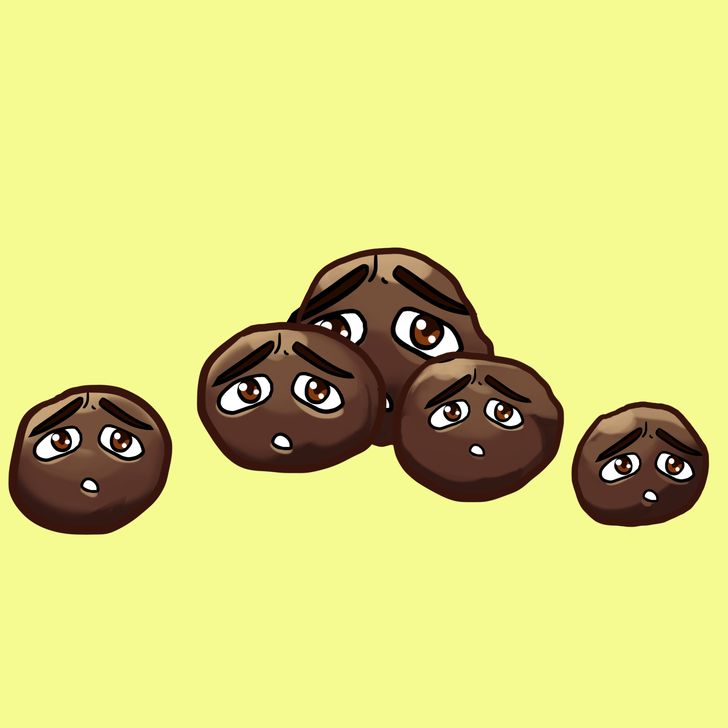
Appearance: Separate solid lumps reminiscent of nuts or goat feces.
Meaning: Severe constipation.
This type of stool means your body lacks fiber. To fix it, try to consume more fiber-rich products like wholewheat pasta, raspberries, and lentils.
2.
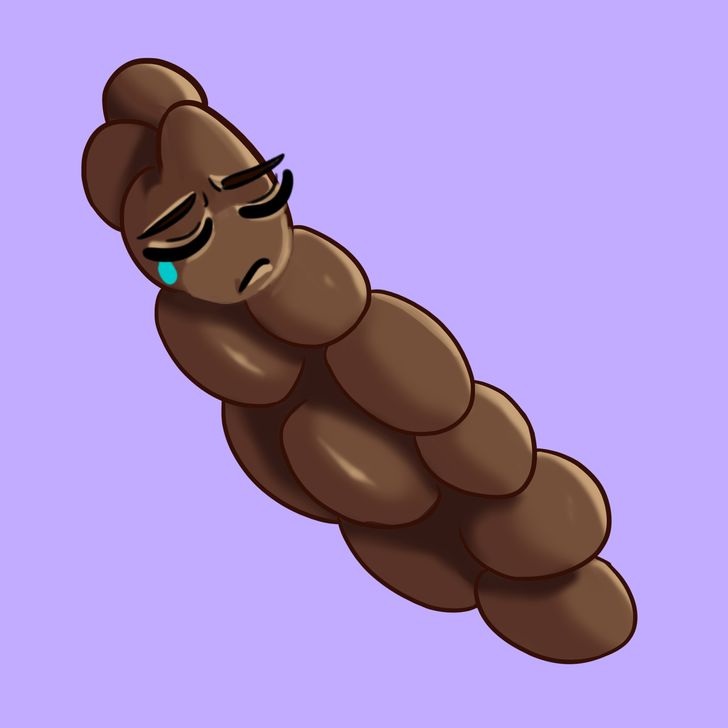
Appearance: Sausage-shaped, large, and lumpy.
Meaning: Constipation.
This type of stool is often linked to a lack of fiber in your diet. Non-dietary causes of constipation can include prolonged use of antidiarrheal medications or a sedentary lifestyle. To address this, try incorporating more fruits and vegetables into your meals and engaging in regular physical activity.
3.

Appearance: A cracked sausage-shaped poop.
Meaning: Normal stool.
You’re doing just fine! Don’t forget to walk and drink more water.
4.

Appearance: Soft, sausage-shaped, and smooth.
Meaning: Perfect stool.
Try to maintain a balanced diet, and avoid stressful situations to keep things as great as they are.
5.
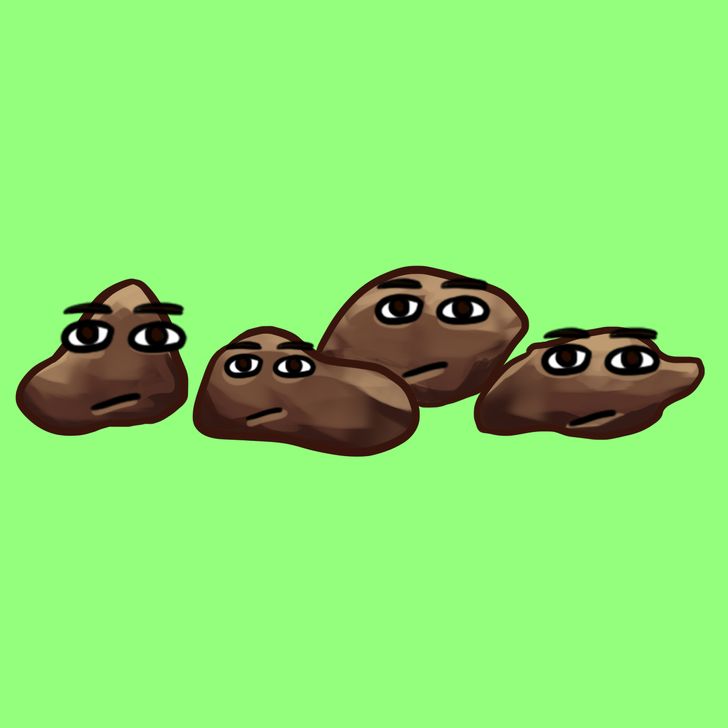
Appearance: Soft lumps with clear edges.
Meaning: Light diarrhea.
It may also be a sign of irritable bowel syndrome. To make it better, try eating low-fiber foods like bananas, crackers, and potatoes.
6.
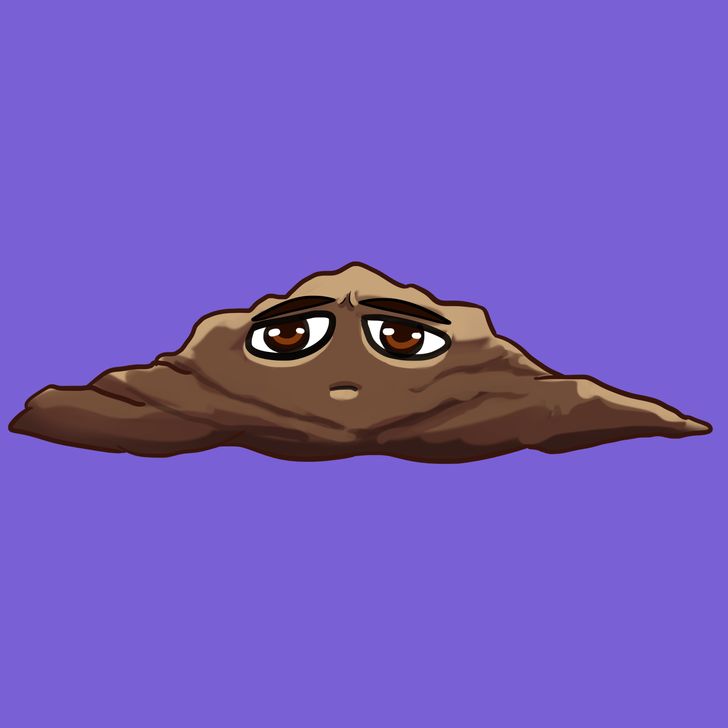
Appearance: Fluffy pieces with ragged edges.
Meaning: Mild diarrhea.
Maybe there’s too much fiber in your diet. Drink more to avoid dehydration, and stick to boiled potatoes and bananas. You may also want to try some OTC, like Imodium or Pepto-Bismol. If the problem lasts more than 2 days, consult a doctor.
7.

Appearance: Liquid without solid pieces.
Meaning: Severe diarrhea.
This could indicate issues like food poisoning, lactose intolerance, a bacterial infection, or a reaction to medication. To combat dehydration, drink plenty of water and consider over-the-counter remedies. However, if the symptoms persist for more than two days or are accompanied by pain, it’s important to seek medical advice.
So how attentive are you to the changes in your body? Do you consult doctors when needed? Or do you try to cope on your own? Share in the comments below!
Illustrated by Natalia Breeva for Bright Side
credits by: Brightside.me






